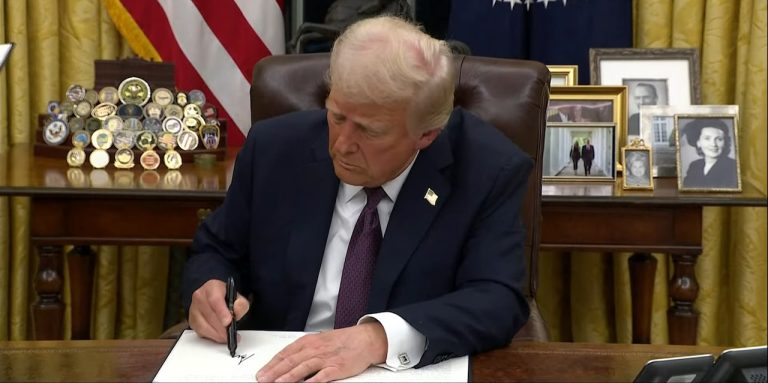
In a flurry of activity, President Trump began his second term by signing a series of executive orders aimed precisely at dismantling what I call the “climate industrial complex.” [emphasis, links added]
The flurry of actions is reminiscent of his first term, which was marked by bold, often polarizing decisions, but this time the focus is laser-sharp: Free U.S. energy and science policy from the constraints of bureaucratic overreach and ideological orthodoxy.
Trump's use of executive orders has been unapologetically direct compared with his predecessors, including President Joe Biden.
While Biden uses executive action to accelerate climate regulation and embed climate priorities into every federal agency, Trump's latest order aims to roll back those efforts and expose what he calls the “weaponization of science and policy.”
Let’s examine each executive order, exploring its content and potential impact on climate science, energy policy, and the broader dismantling of the climate-industrial complex.
1. Preliminary revocation of harmful executive orders and actions
The order lays the groundwork by repealing a series of Biden-era executive actions. Prioritize climate change over economic and energy issues.
These include rollbacks of regulations on fossil fuel projects, emissions standards and the federal government's massive climate-related spending.

Impact on the economy: By repealing these policies, the government is removing unnecessary red tape that inhibits domestic energy projects.
Overregulation increases industrial costs, stifles innovation, and forces reliance on imported energy, while undermining U.S. competitiveness on the global stage.
For example, the oil and gas industry loses an estimated $87 billion annually due to regulatory delays.

Environmental reality: Despite their lofty goals, many of the repealed policies had minimal environmental benefits.
For example, strict emissions standards disproportionately target industries already committed to clean technologies while allowing countries with lax environmental laws to dominate the market.
This retreat combines environmental progress with economic pragmatism, focusing on real results rather than symbolic gestures.
2. End the weaponization of the federal government
In his sweeping order, Trump takes aim at bureaucracies that have turned climate change into a quasi-religious mission.
By steering federal agencies away from “mission creep” and partisan agendas, the order aims to restore accountability and neutrality in their operations.
Impact on the economy: Federal agencies use climate mandates as a tool to impose costly regulations on businesses, often with little regard for their economic impacts.
This command ensures Agencies focus on their core missions rather than engaging in ideological battles, creating a more stable and predictable business environment.
First, unlocking America’s full LNG potential—an industry the Biden administration has tried to stifle in its final days—would bring benefits to American families and global communities that rely on this affordable and efficient energy source, like my home country of Poland. Tangible benefits.

Environmental reality: Much of the climate-focused funding and research provided by these agencies has been criticized for prioritizing alarmism over viable solutions.
By ending this politicization, The government is paving the way for science-driven, pragmatic environmental policy.
Irrational Fear is written by climatologist Dr. Matthew Wielicki and is supported by readers. If you value what you read here, please consider subscribing and supporting the work.
Read A Break from Irrational Fear
